
table of contents
- 60 poisonous plants for the garden
- Plants from A - D
- Plants from E - F
- Plants with G
- Plants with H
- Plants from K - L
- Plants from M - P
- Plants from R - S
- Plants from T - Z
- First aid in case of poisoning
- Contact experts
- Self-measures
- List of poison centers
- Germany
- Poison information centers in Austria and Switzerland
Poisonous plants are not only found in the wild, but more often in your own garden than many people think. Plants that are poisonous exert a special fascination on gardeners, walkers and the joy of plants through their colors, the flowers, their growth form or their smell. However, there are more plants whose contact can even be fatal. For this reason, it is important to know which plants in the garden are poisonous and which measures are important in the event of poisoning.
60 poisonous plants for the garden
Many plants are poisonous. Classics like the foxglove and laburnum are known, but what about tulips or the popular thuja? Numerous plants are poisonous for humans in particular and, depending on their toxicity, can lead to death within a short time. Because especially children and sensitive people are exposed to toxins. Nevertheless, poisonous plants in the garden provide that certain something. The following list gives you an overview of 60 poisonous plants that are poisonous to humans. You can even come across many of these in the wild:
Plants from A - D
1. bracken (bot. Pteridium aquilinum): The bracken hides its toxicity behind its good appearance. However, long-term consumption of the plant can lead to cancer.
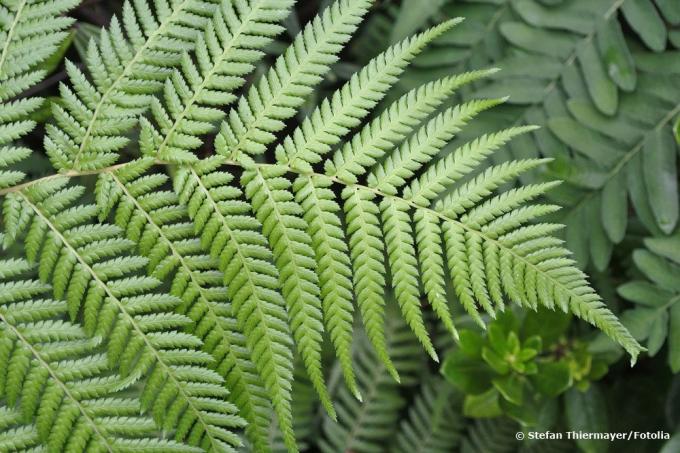
2. Adonis (bot. Adonis vernalis): The Adonis rose is an attractive flower whose steroid glycosides lead to cardiac arrhythmias and gastrointestinal complaints.
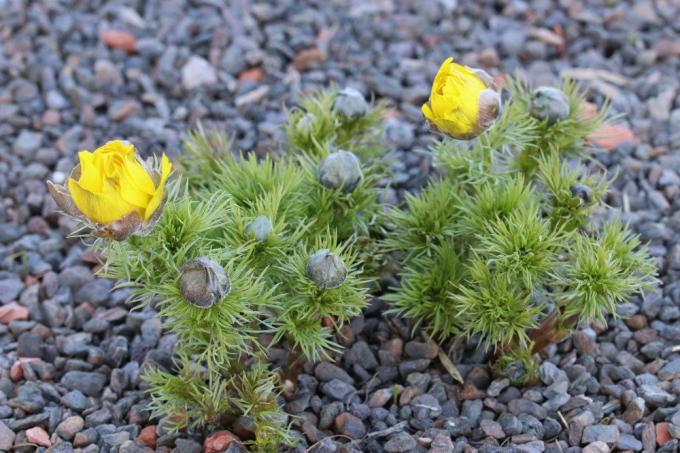
3. Cyclamen (bot. Cyclamen): Yes, the cyclamen is also one of them and causes numerous symptoms of poisoning due to the cyclamine it contains. This is found in the largest amount in the roots and the tuber. Possible consequences of consumption are diarrhea, vomiting, stomach pain, cramps and symptoms of paralysis.
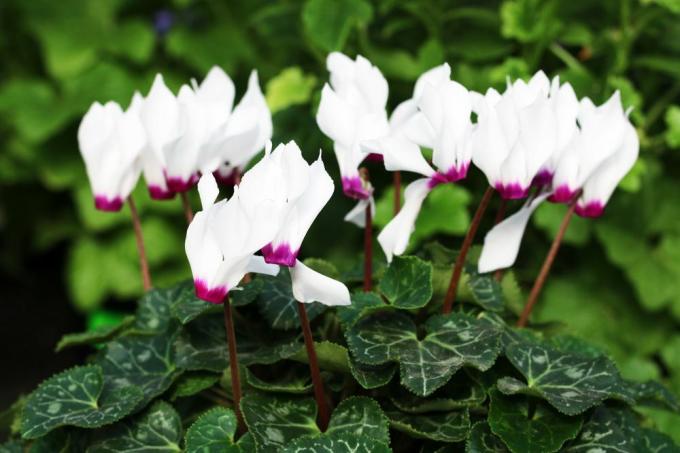
4. Arum (bot. Arum): Because of their appearance, arum sticks are welcome guests in your own garden. However, the plants should never be eaten or touched without gloves, as the oxalate crystals they contain are intensely irritating to the skin and gastrointestinal tract.

5. Broom (bot. Cytisus scoparius): Yellow flowers especially tempt children to play with the broom. However, this can lead to restlessness, cold sweats and paralysis.

6. Wisteria (bot. Wisteria): Wisteria are just as inspiring as laburnum and also poisonous. Circulatory problems and stomach problems are typical complaints.
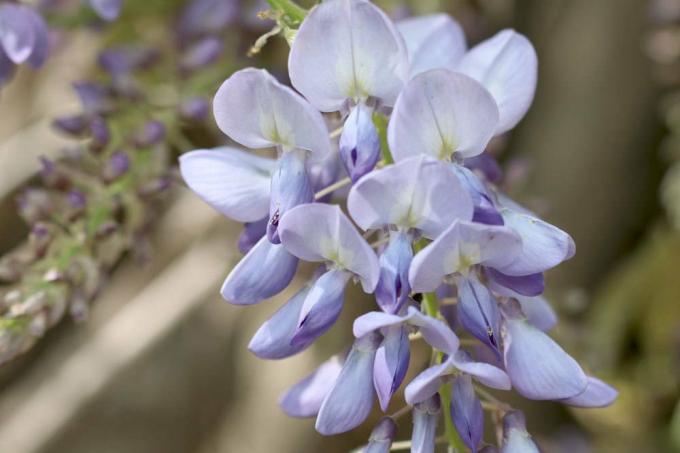
7. Christmas rose (bot. Helleborus niger): Known as snow rose or Christmas rose, the toxicity of this plant is only weak. If large amounts of plant parts are consumed, diarrhea, malaise or vomiting can occur.
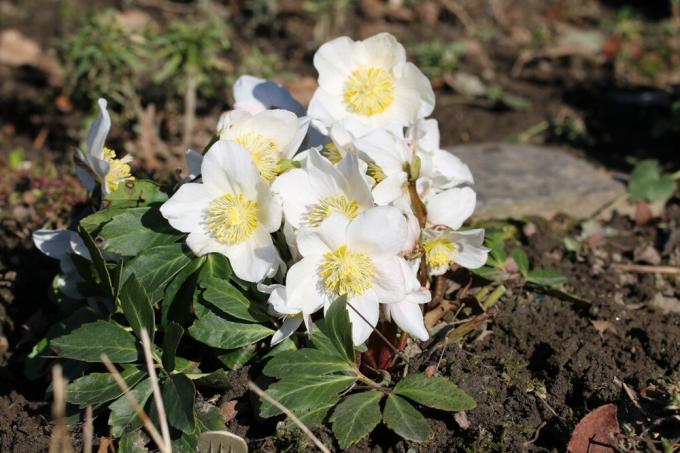
8. Dieffenbachia (bot. Dieffenbachia): In Dieffenbachia there are calcium oxalate crystals that attack the skin and the digestive tract. Gloves are among the best measures you can take against this.
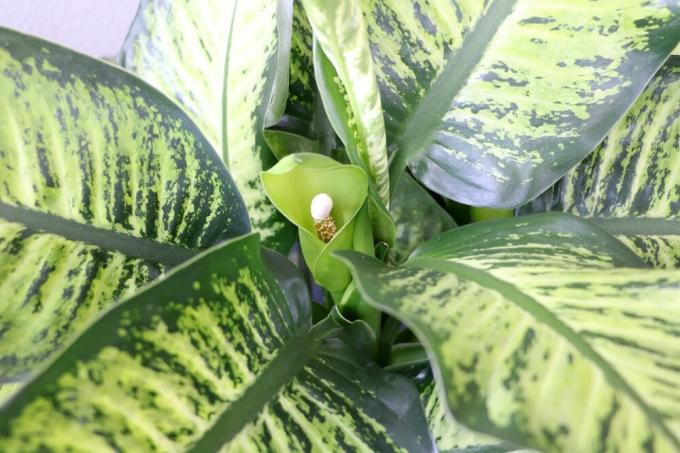
Plants from E - F
9. yew (bot. Taxus baccata): Yew trees can reach heights of up to ten meters and are among those plants whose toxicity is not in the conspicuous berries. Actually, these are not berries, but seed coats that cover the extremely poisonous seeds. In addition to the needles, these are poisonous and, depending on the amount consumed, can lead to severe cardiac arrhythmias that must not be ignored.
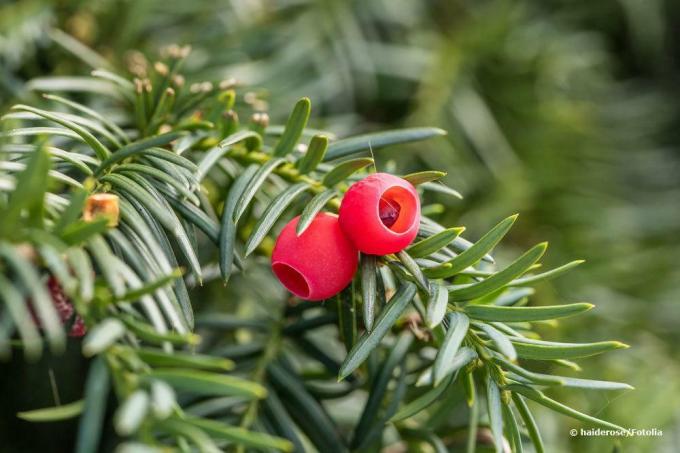
10. One berry (bot. Paris quadrifolia): The oneberry is a Germer plant that develops dark blue fruits. These attack the nervous system and the kidneys, which inevitably leads to death.

11. Monkshood (bot. Aconitum napellus): The monkshood is one of the classics among the poisonous plants in Germany. Because the buttercup plant can be dangerous on contact and life-threatening if parts are swallowed.

12. Angel trumpets (bot. Brugmansia): Brugmansia is a common plant because it causes feelings of happiness and hallucinations due to its poisonous fumes. Then respiratory paralysis follows and death occurs.

13. Buckthorn (bot. Frangula alnus): The buckthorn is mainly found in the unripe fruits, the bark and the leaves, which can cause complaints of the gastrointestinal tract.
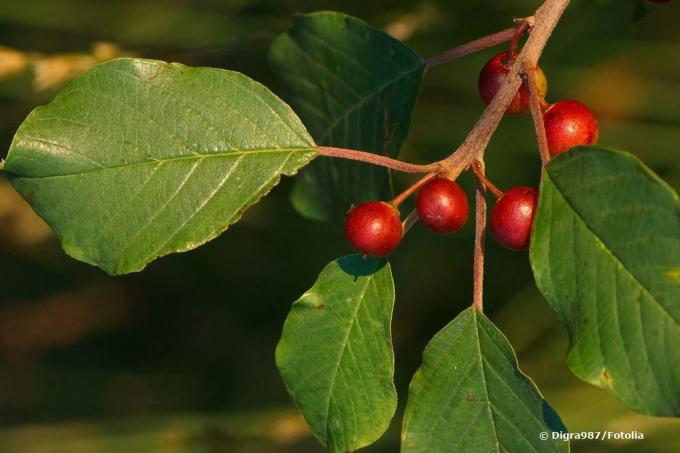
14. thimble (bot. Digitalis): The name of the foxglove is similar to the monkshood, but it is not as poisonous. Because it causes unpleasant gastrointestinal problems and cardiac arrhythmias due to the digitoxin it contains.
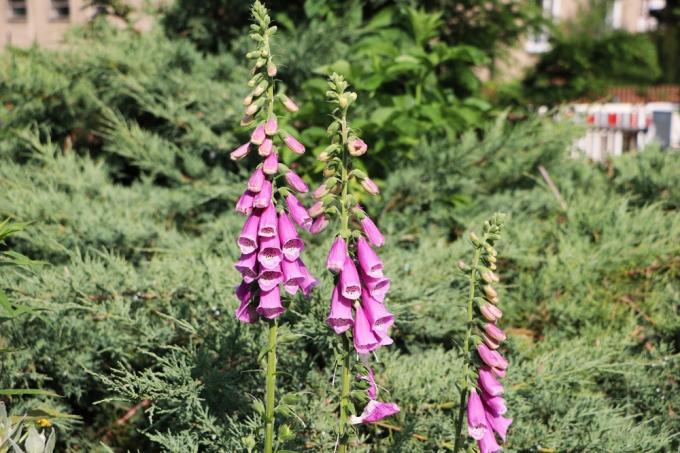
Plants with G
15. Kidney bean (bot. Phaseolus vulgaris): French beans are poisonous. However, only if parts of the plant are consumed raw, because the lectins they contain lead to cramps and shocks.
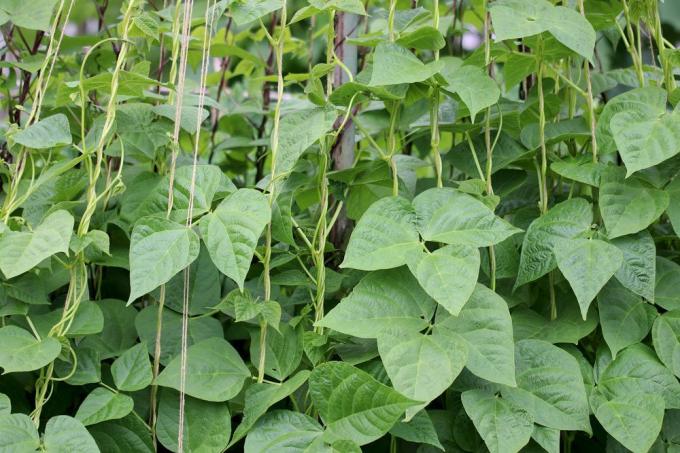
16. Spotted hemlock (bot. Conium maculatum): It was used as a means of poisoning executions. Even a few quantities of the unripe fruit containing coniin lead to death after a short time.
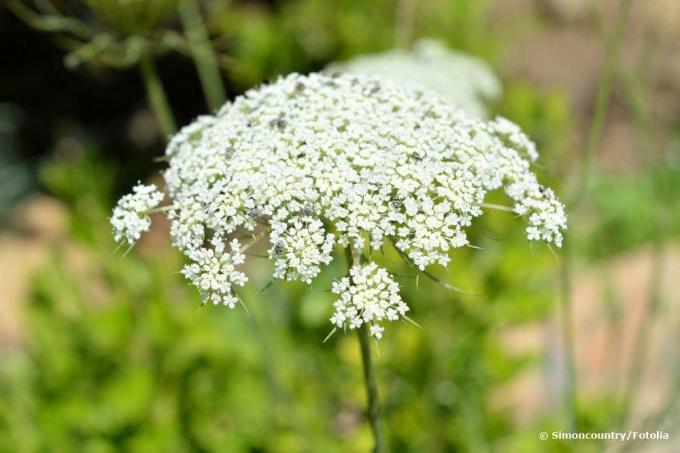
17. Common ivy (bot. Hedera helix): It is more poisonous than you think. The saponins react on the skin and stomach.
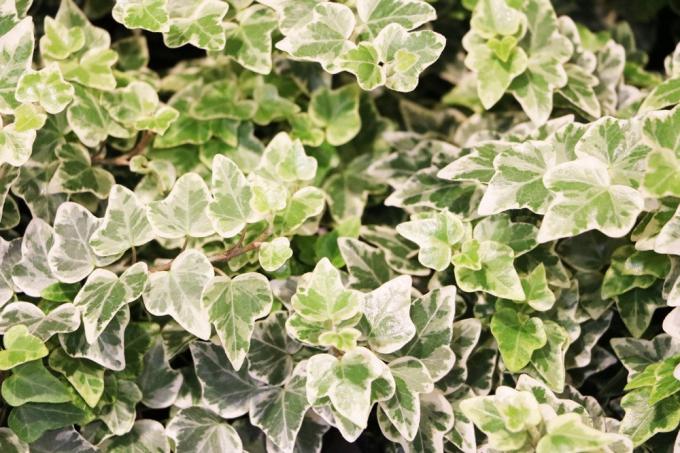
18. Common nugget (bot. Strychnos nux-vomica): Consumption is not recommended. The contained alkaloids affect the central nervous system with muscle twitching, respiratory paralysis and death, as soon as action is not taken quickly enough.

19. Common boxwood (bot. Buxus sempervirens): It looks harmless, but it is not. Depending on the amount of plant parts consumed, the state of health and age of the person, either vomiting or even death occurs.
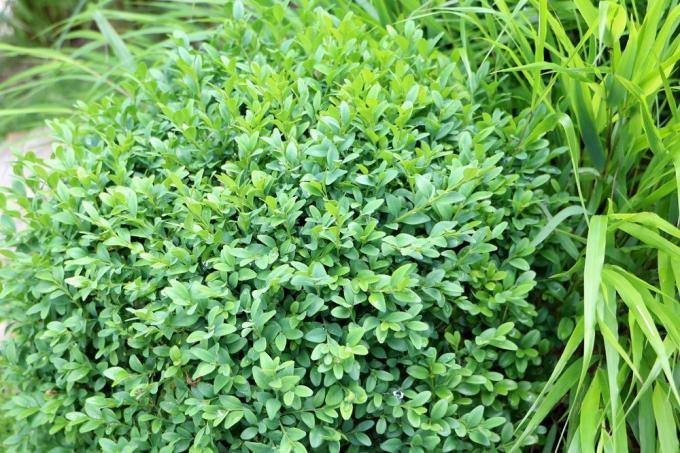
20. Common honeysuckle (bot. Lonicera xylosteum): Honeysuckles look very similar to the edible cherries, they are only slightly lighter. Vomiting and stomach upset occur after consumption.

21. Common privet (bot. Ligustrum vulgare): Even touching sensitive people is enough to cause skin irritation. While consumption leads to stomach and circulatory problems.
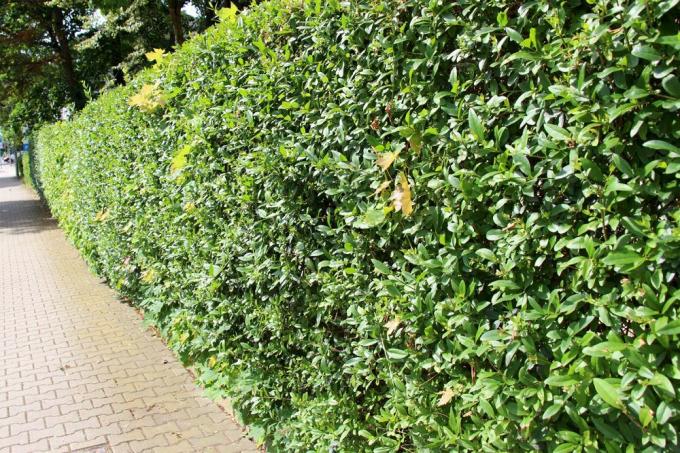
22. Common snowberry (bot. Symphoricarpos albus): Snowberries are popular plants whose flowers contain poisonous saponins. When consumed, these lead to nausea, headache, fever and persistent sleepiness.
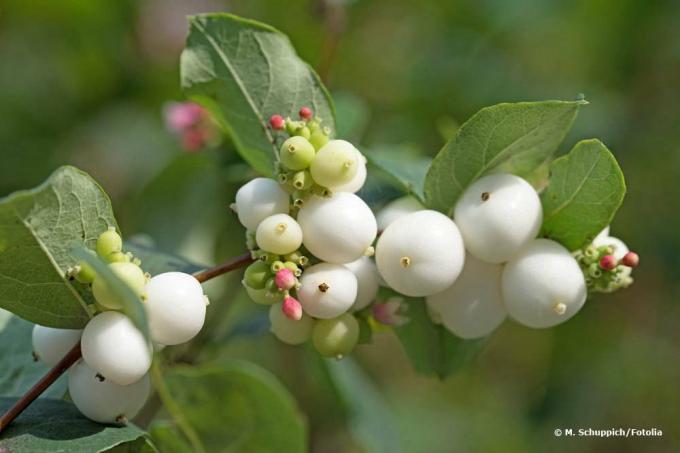
23. Poison berry (bot. Nicandra physaloides): Your name sounds like trouble. However, the pretty flowers only affect the digestive tract.
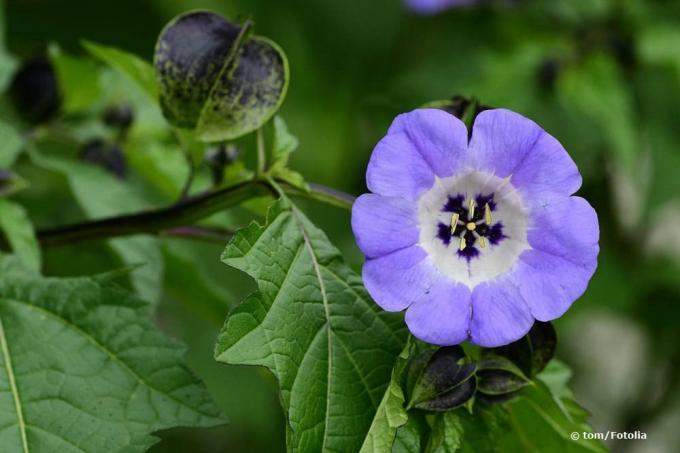
24. Gold lacquer (bot. Erysimum cheiri): The beautiful flowers in their warm colors inspire, but the cardenolides they contain irritate the skin and lead to cardiac arrhythmias after consumption.
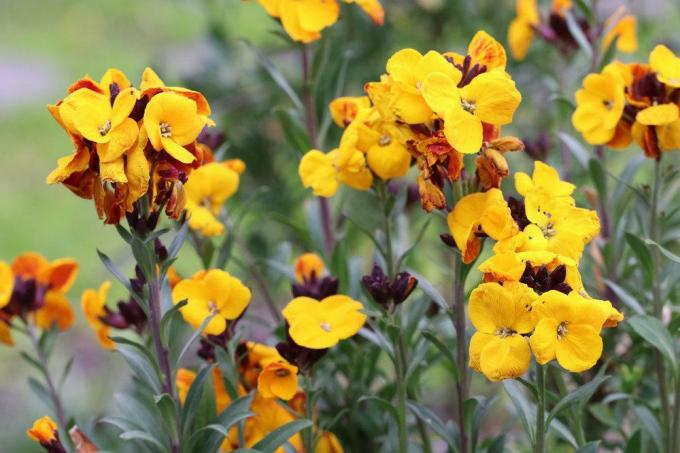
25. Laburnum (bot. Laburnum): With beautiful inflorescences that hang down golden yellow, it magically attracts people. They can be touched, but hands should be washed afterwards, as toxins enter the body through the skin and cause tremors and convulsions.
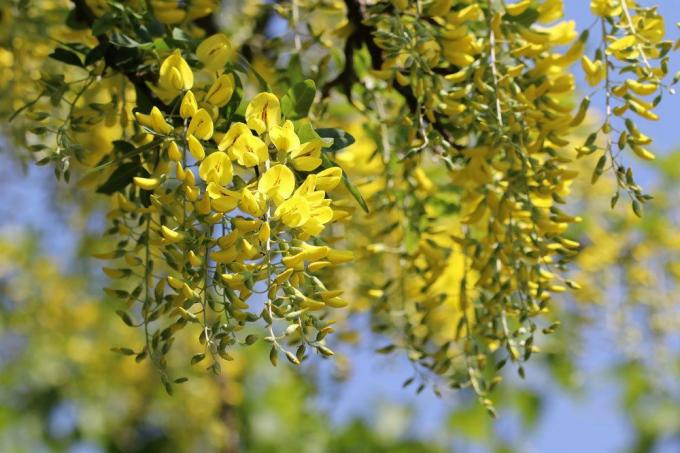
Plants with H
26. Buttercup (bot. Ranunculus sceleratus): The buttercup is quite aggressive and immediately causes blistering and digestive tract problems due to the ingredient protoanemonin.
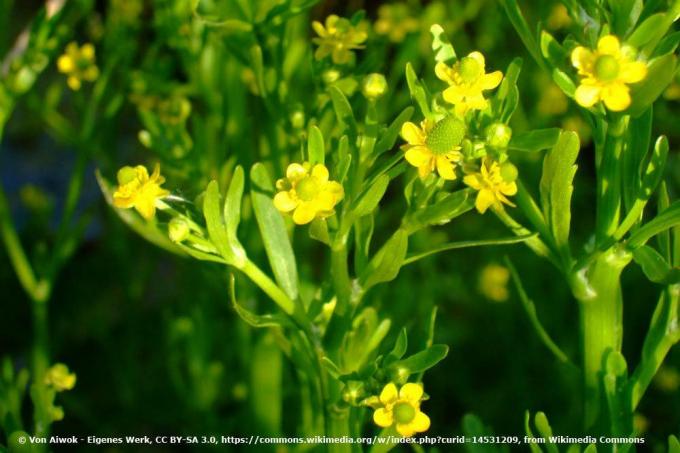
27. Dogwood (bot. Cornus alba): The dogwood is another poisonous plant that only causes slight stomach problems after consumption.
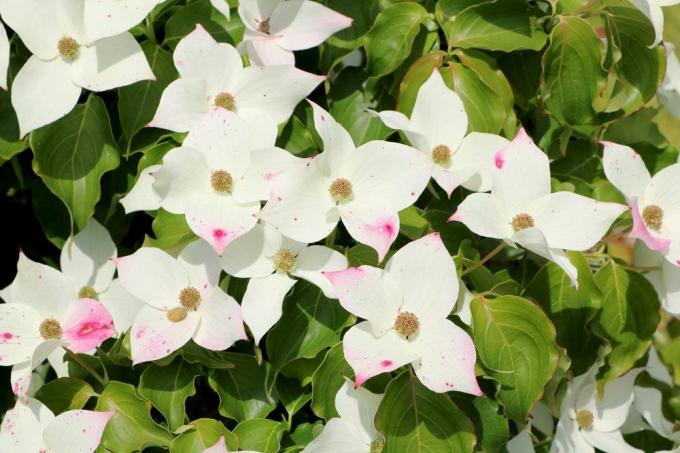
28. Autumn crocus (bot. Colchicum autumnale): The autumn crocus are known for their poisonous effect, which can result from consumption and even contact with the tuber. If parts of the plant have been eaten, severe stomach problems and progressive respiratory paralysis occur after a few hours, which can lead to death. Quick action is required here.

29. elder (bot. Sambucus): Elderberry is mainly poisonous in the bark and pulp, which lead to nausea. The fruits should be cooked before use.
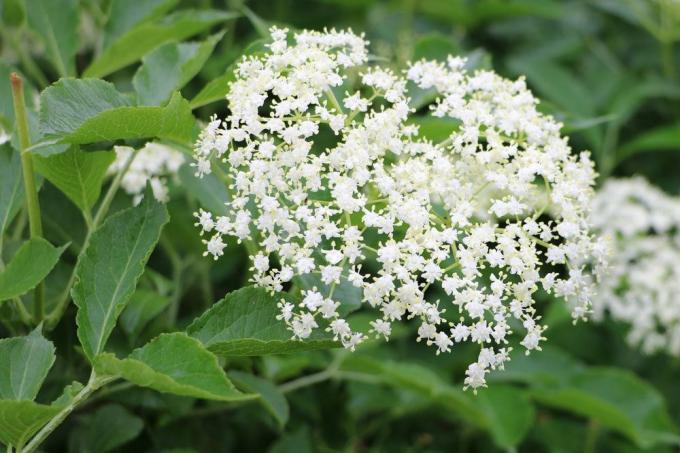
30. Hydrangeas (bot. Hydrangea): As beautiful as hydrangeas are, the more the plants should be enjoyed with caution. They can lead to anxiety and dizziness, as well as states of intoxication.
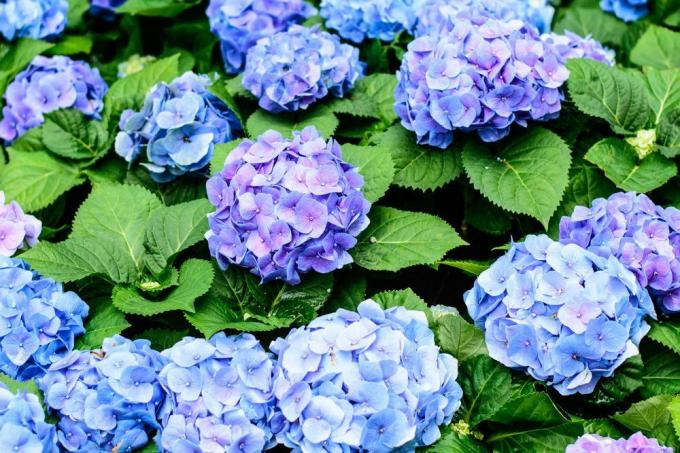
31. Dog parsley (bot. Aethusa cynapium): The dog parsley is rarely grown in the garden and leads to severe respiratory paralysis and death even in small quantities.
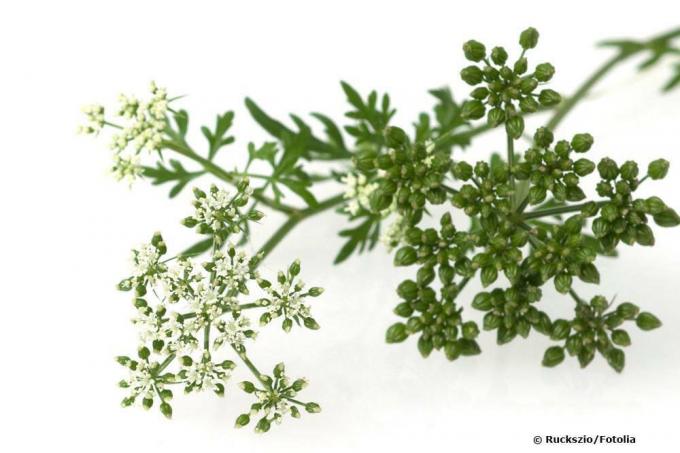
32. hyacinth (bot. Hyacinthus): The popular hyacinths contain oxalic acid in the tuber, which can permanently lead to kidney stones and, after consumption, directly to nausea.
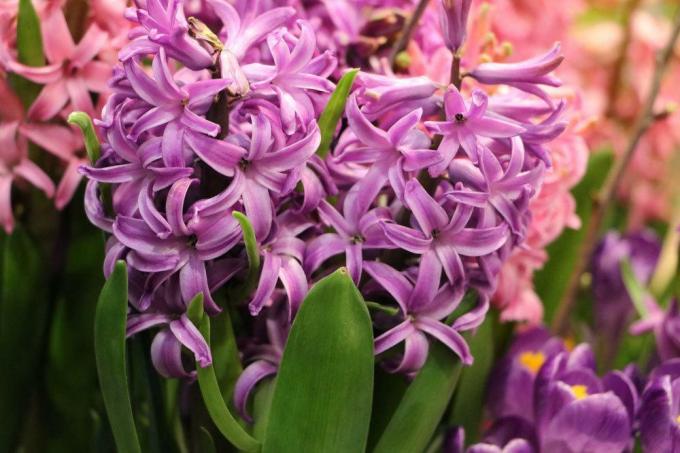
Plants from K - L
33. Imperial Crown (bot. Fritillaria imperialis): Despite the striking flowers, the poisonous effect of the plants remains very low and is limited to skin irritations and stomach complaints. Most of the poison is in the extremely large onion.
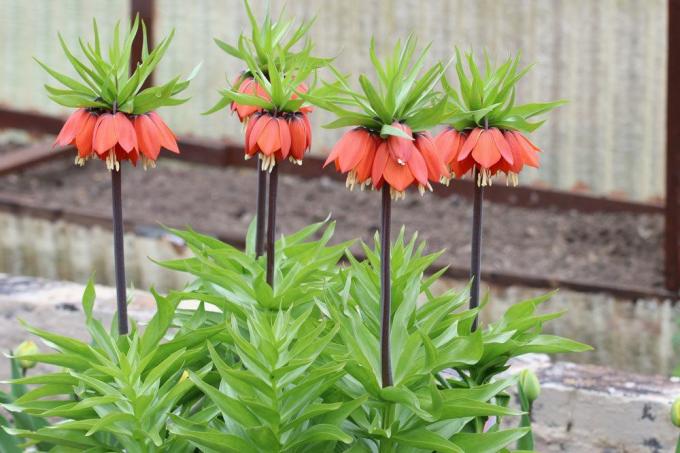
34. Pokeweed (bot. Phytolacca): Pokeweed does not come from Europe, but is found as a neophyte that is increasingly being grown in one's own garden. All parts of the plant are poisonous and children in particular can die from eating the berries.
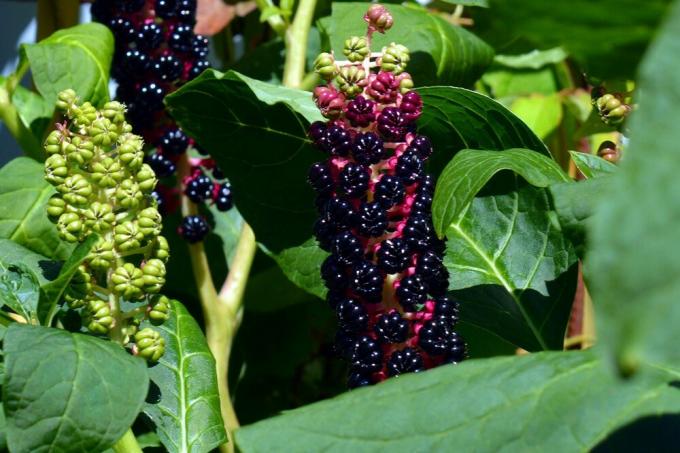
35. Buckthorn (bot. Rhamnus cathartica): The buckthorn contains anthracene offshoots, which rarely lead to digestive tract complaints, especially in children.
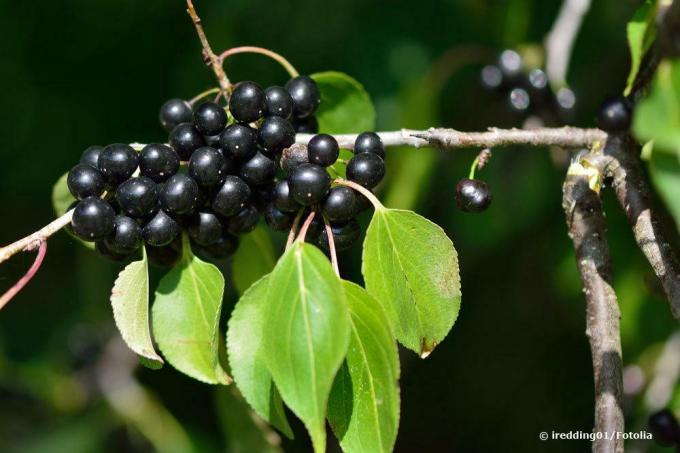
36. Crocuses (bot. Crocus): Crocuses are also one of the poisonous harbingers of spring, the tuber of which contains high amounts of steroid saponins. Children especially suffer from these conditions and dizziness, delirium, convulsions and loss of consciousness can occur
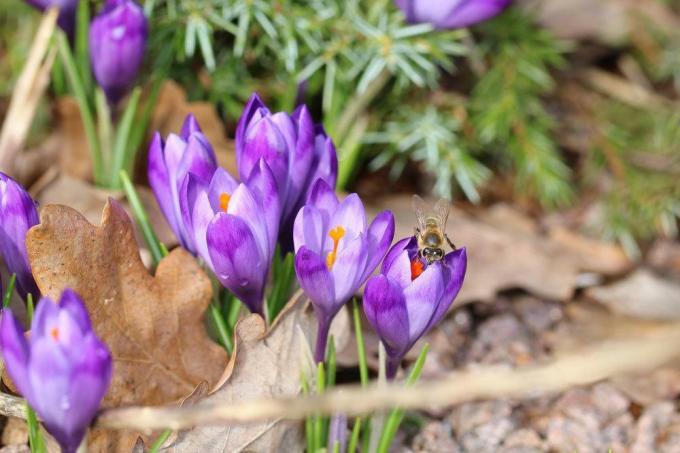
37. Chinese lantern flower (bot. Physalis alkekengi): Caution! Do not confuse this plant with the Cape gooseberry (bot. Physalis peruviana), which is cultivated for its fruits. The lantern flower is a poisonous plant whose unripe fruits and plant parts should not be consumed.
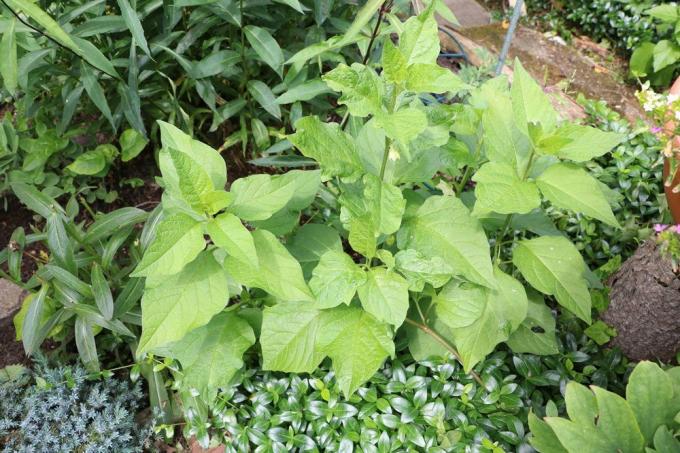
38. Trees of life (bot. Thuja): Arborvitae are often used as hedge plants, but all parts of the plant are poisonous. Diarrhea, vomiting and paralysis are just a few of the symptoms, until death occurs in high amounts.

39. Laurel cherry (bot. Prunus laurocerasus): Laurel cherries are slightly poisonous and mainly attack the stomach. To do this, however, you would have to chew and swallow a large amount of the fruit thoroughly.
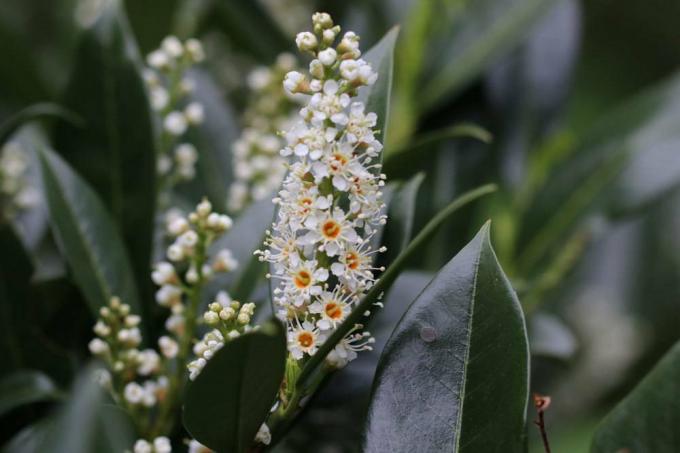
Plants from M - P
40. lily of the valley (bot. Convallaria majalis): The lily of the valley is one of the most famous poisonous plants of spring in Germany. All parts of the plant are poisonous and lead to stomach problems and cardiac arrhythmias, which makes a doctor's visit necessary.

41. mistletoe (bot. Viscum album): Mistletoe contains toxic proteins which, after consumption, lead to sweating and gastrointestinal complaints.
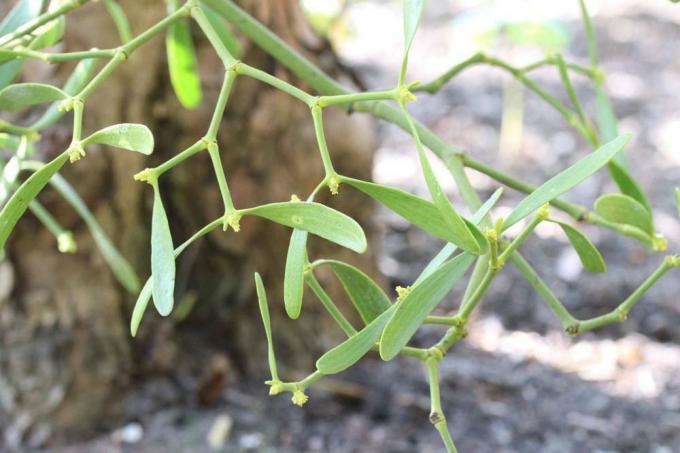
42. Nightshade (bot. Solanum dulcamara): You should never eat the berries, especially when they are unripe. These contain alkaloids and thus seriously disrupt digestion.
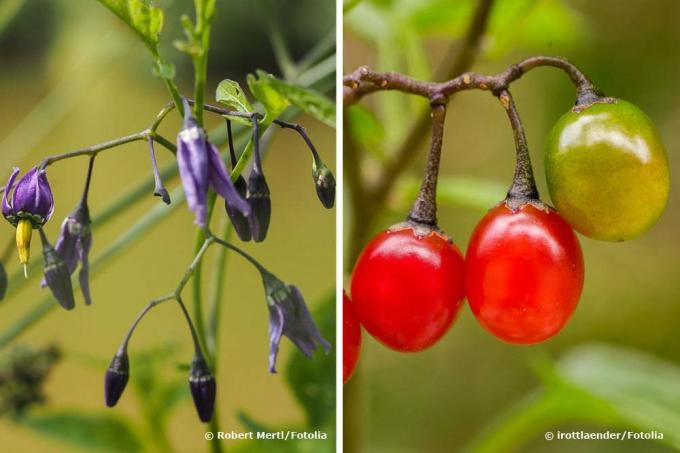
43. Daffodils (bot. Narcissus): Be careful when planting daffodils. Because the popular spring flowers are a real poison bomb and can lead to death in large quantities. Stomach discomfort, vomiting, tiredness and symptoms of paralysis are then the signs of poisoning.
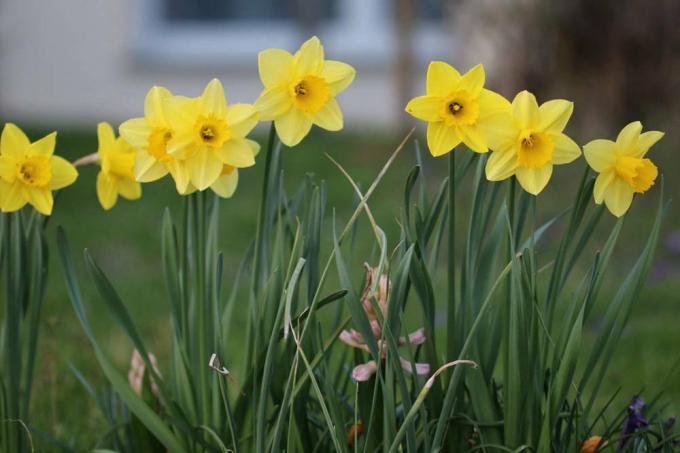
44. oleander (bot. Nerium oleander): Oleander should not be underestimated either. The dog poison plant has oleandrin, which in higher quantities inevitably leads to death. It is poisonous in all parts and can even cause skin irritation.
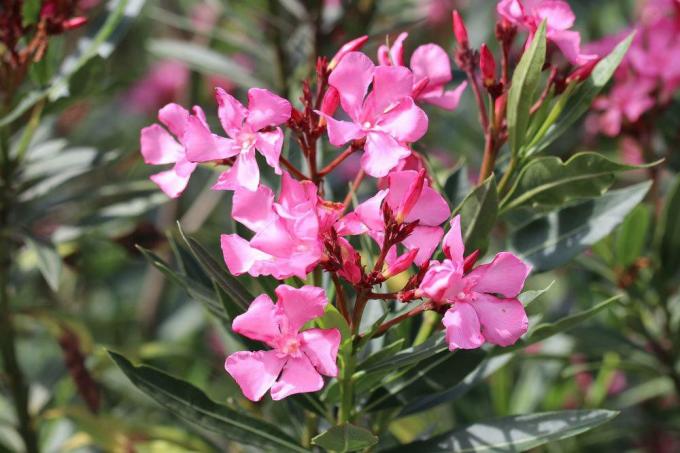
45. Ongaonga (bot. Urtica ferox): Urtica ferox is a real poison cocktail. Formic acid, histamine and 5-hydroxytryptamine are just a few of the ingredients that cause extremely unpleasant irritation of the skin with blistering and itching. Anyone who has had contact with the plant over a long period of time should definitely see a doctor, as the poison cocktail can lead to death even if not consumed.

46. Pfaffenhütchen (bot. Euonymus europaea): The euonymus is also popular with many people and children, the flowers of which are reminiscent of the hat of a clergyman. The bark, leaves and seeds in particular contain large amounts of alkaloids, which after consumption lead to cardiac arrhythmias and severe gastrointestinal discomfort. That is why a good hydration is important here.
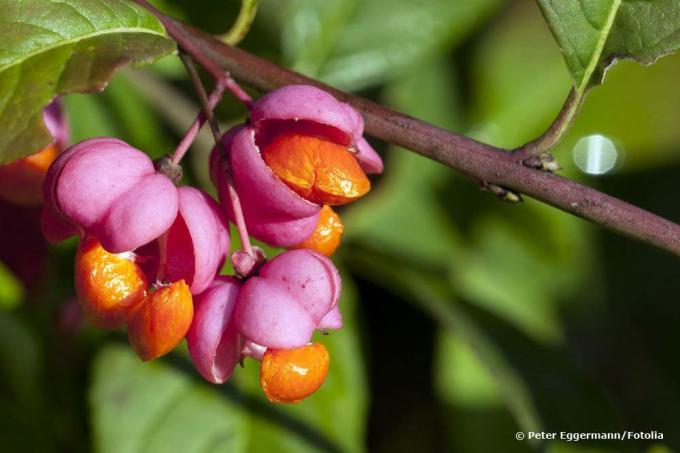
Plants from R - S
47. Rhododendrons (bot. Rhododendrons): Rhododendrons are popular ornamental plants, but they are peppered with poisonous diterpenes. These can weaken the heartbeat to such an extent that it leads to shock, respiratory paralysis and even death.

48. Giant hogweed (bot. Heracleum mantegazzianum): The giant hogweed is, as the name suggests, an extremely stately plant that is no less poisonous. The plant contains hyoscyamine, which increases depending on the intensity of the sun's rays. The plant irritates the skin when touched and can even cause burns 2. Trigger degree.

49. Larkspurs (bot. Delphinium): The popular knight's spurs are slightly poisonous and hit the stomach a little after being consumed.
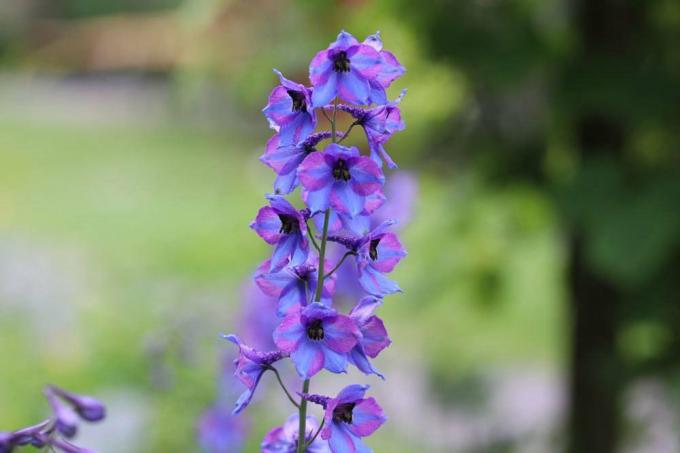
50. Castor oil (bot. Ricinus communis): The poisonous plant of the year 2018, the miracle tree, is one of the deadliest plants in the garden. Because even an extremely small amount of seeds consumed can lead to death within 48 hours.
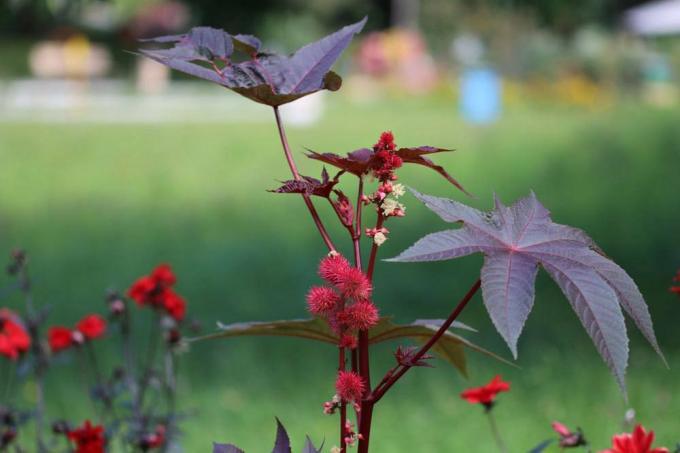
51. Crown of fame (bot. Gloriosa superba): The crown of fame is particularly popular with children because of its flower shape. It can lead to nausea and severe respiratory paralysis.

52. Black henbane (bot. Hyoscyamus niger): One of the most poisonous plants in Germany, here even small amounts of swallowed flowers can lead to death. In any case, the emergency number must be contacted here.
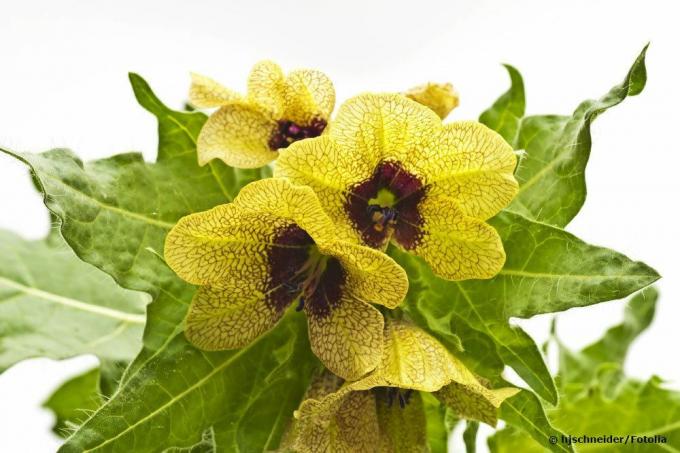
53. Iris (bot. Iris): Irises are also poisonous plants. The diterpenes cause stomach problems and diarrhea.
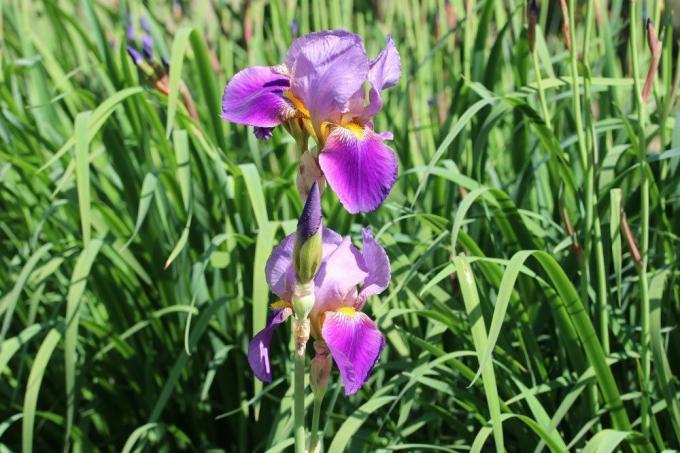
54. daphne (bot. Daphne mezereum): Daphne is very dangerous due to the picturesque flowers and can cause seizures in children. Adults are also not immune to the plant and skin contact often leads to violent blistering.

55. Thorn apples (bot. Datura): Thorn apples are not to be trifled with either. Numerous symptoms are triggered by contact with the nightshade plant.

Plants from T - Z
56. Deadly nightshade (bot. Atropa belladonna): Yes, deadly nightshade. Known and feared. The plant with the black fruits, which are tempting to snack due to their sweet aroma, can trigger all kinds of symptoms, including reddening of the skin, restlessness and even hallucinations. It has been known for centuries and should be kept away from children, as they like to eat the berries.

57. Tulips (bot. Tulipa): Even tulips are poisonous in all parts of the plant and should therefore be consumed with caution. Because it can lead to cramps and dizziness.

58. Rowanberry (bot. Sorbus aucuparia): Rowan berries are only poisonous as soon as they are consumed uncooked. For this reason, always cook beforehand.
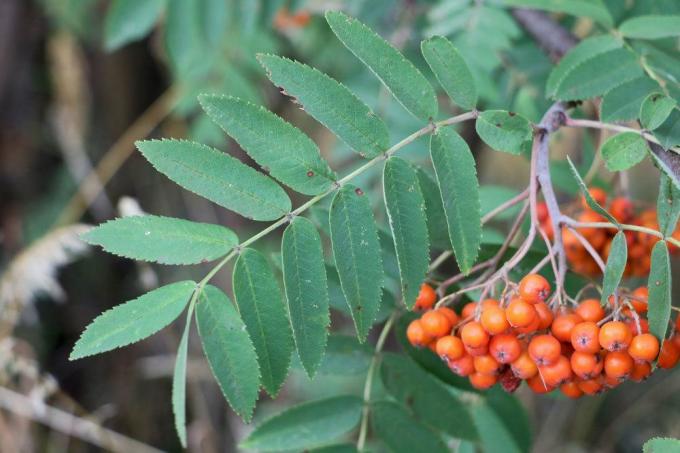
59. Water hemlock (bot. Cicuta virosa): The contained cicutoxin only affects humans. For example, vomiting, diarrhea or cramps occur just half an hour after consumption, followed by respiratory paralysis.

60. Cypress wolf milk (bot. Euphorbia cyparissias): The milky sap of cypress wolf milk contains terpene compounds which, when in contact with mucous membranes, lead to severe irritation and even long-lasting effects.

Note: Please note that this article does not in any way replace a visit to the doctor. There is no guarantee that medical statements are correct.
First aid in case of poisoning
If you or your family came into contact with one of these plants or even consumed parts of them, you should definitely take action. With poisonous plants of all kinds, it is important to act quickly and carefully. Because first aid requires calm action. Once you panic, things can get worse. Hence stand Quiet and speed at the top. The following instructions will help you provide first aid effectively:
Contact experts
If you are just slightly unwell, either the next one should Poison Control Center or contact a doctor. Alternatively, if the symptoms appear externally, a dermatologist can be contacted. If the symptoms turn into dangerous situations such as shortness of breath or a circulatory collapse, contact the emergency services in any case. Therefore you will find a list with the associated poison emergency calls at the end of this article.
W questions
During the 911 call, you should answer the five most important W questions as precisely as possible:
- who is poisoned? For example a child, senior or adult
- What did the poisoning cause? For example, a lily of the valley or a peanut is responsible
- When did the poisoning take place?
- As did the poisoning occur? For example, externally or through consumption
- How much the poisonous plants was eaten or touched?
This will give the emergency number, doctor and poison control center all the information they need with regard to the symptoms of poisoning, the type of plants and whether there is any reason to hurry.
Self-measures
drink only water
It is best to give clear water during the waiting time so that the poisoned person remains hydrated.
Don't vomit
Never make the poisoned person vomit. Because that can make the situation worse.
Plant sample
Before you go to the doctor, you should definitely take a sample of the plant with you. It is best to cut a piece off so that the doctor can examine it. It is essential to wear gloves when dealing with plants that, for example, form a milky sap or otherwise irritate the skin. So you don't injure yourself even more.
tip: The German poison information centers can be reached 24 hours a day. If there is an acute emergency, you must report this so that you can also contact the emergency number overnight.
List of poison centers
Germany
Berlin
Charite poison emergency call / Berlin poison emergency call
giftnotruf.charite.de
0 30-19 24 0
Bonn
Information center against poisoning in North Rhine-Westphalia / Bonn poison center
Center for Pediatrics, University Hospital Bonn
www.gizbonn.de
02 28-19 24 0 and 0228 - 28 73 333
Erfurt
Joint poison information center (GGIZ Erfurt) of the states Mecklenburg-Western Pomerania, Saxony, Saxony-Anhalt and Thuringia in Erfurt
www.ggiz-erfurt.de
03 61-73 07 30
Freiburg
Poisoning Information Center Freiburg (VIZ)
university hospital Freiburg
www.giftberatung.de
07 61-19 24 0
Goettingen
Poison information center north of the states of Bremen, Hamburg, Lower Saxony and Schleswig-Holstein (GIZ-Nord)
www.giz-nord.de
05 51-19 24 0
Homburg / Saar
Poisoning information and treatment center,
Saarland University Hospital and Medical Faculty of Saarland University
www.uniklinikum-saarland.de/giftzentrale
0 68 41-19 240 and 06841 - 16 83 15
Mainz
Poison Information Center (GIZ) for the states of Rhineland-Palatinate and Hesse
Clinical toxicology, Mainz University Medical Center
www.giftinfo.uni-mainz.de
0 61 31-19 240 and 06131 - 23 24 67
Munich
Poison Emergency Call Munich - Department of Clinical Toxicology Klinikum rechts der Isar - Technical University of Munich
www.toxinfo.med.tum.de
0 89-19 24 0
Poison information centers in Austria and Switzerland
Vienna, Austria
Poisoning Information Center (VIZ) - Gesundheit Österreich GmbH
www.goeg.at/Vergiftungsinformation
+43-1-4 06 43 43
Zurich, Switzerland
Swiss Toxicological Information Center
www.toxi.ch
145 (throughout Switzerland)
+ 41-44-251 51 51 (from abroad)
